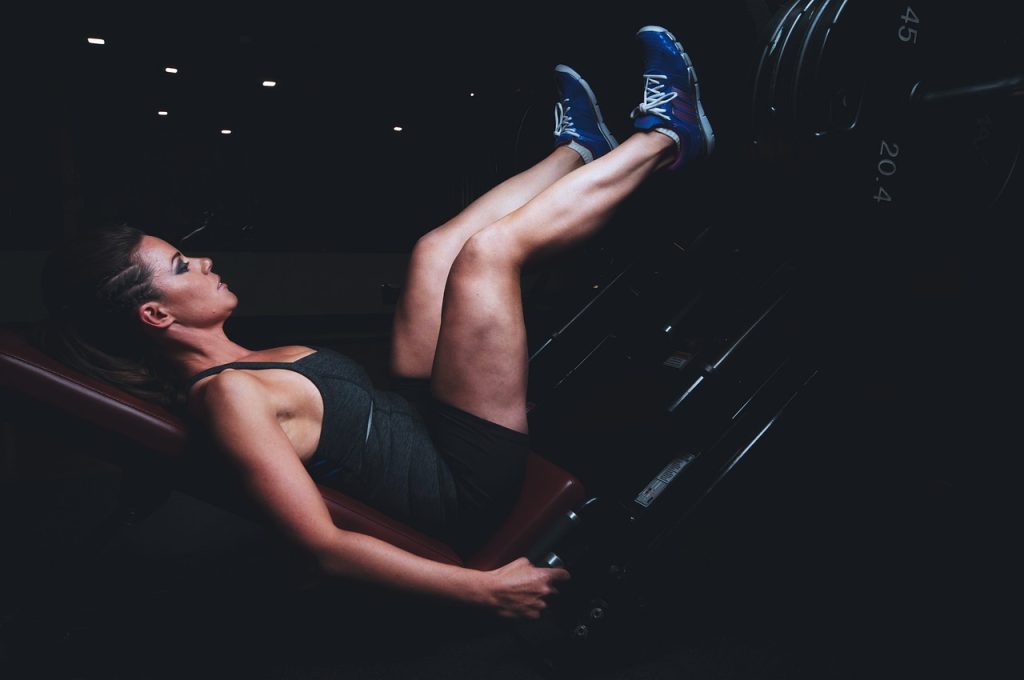Geschatte leestijd: 3 minuten
At the leg press, you can place your feet wide or narrow on the machine. Here we discuss the difference in muscle activity involved in both variations.
Leg press
Last month I wrote about another frequently asked question about the
leg press: What is the difference in effect when you place your feet high or low on the platform?
Based on studies, I came to the following conclusion:
- High placement results in higher activation of the gluteal muscles
- Low placement results in higher activation of the quadriceps
So today, a different variable: What is the difference between a wide or narrow placement of the feet in the leg press? Spoiler alert: It seems to make little to no difference.
Feet wide or narrow in the leg press?
In 2001, researchers compared the muscle activity of various muscles involved during the
squat and the leg press [1]. They distinguished between the leg press with high or low feet placement (as described in the aforementioned article), but also both exercises with a wide or narrow stance. Here, I mainly focus on the latter distinction in the leg press.
The researchers had ten experienced, male participants perform the exercises. Participants were allowed to determine what a comfortable wide stance and a comfortable narrow stance were for them. A narrow stance was thus measured at a distance of (measured from the inside of the heel) 24 to 31 centimeters. The wide stance ranged from 53 to 65 cm. However, the researchers placed these distances in proportion to the distance between both hips to correct for anatomical differences.
Results:
Below are the results. We see the (peak) activation of three of the four quadriceps muscles (rectus femoris, vastus lateralis, and vastus medialis). In addition, measurements were also taken for the hamstrings (inner and outer) and one of the calf muscles, the gastrocnemius.
Activation was measured for the squat, the leg press with high feet placement (LPH), and the leg press with low feet placement (LPL). Additionally, for all these exercises, activation was compared between a wide stance (‘WS’) or narrow stance (‘NS’).
For this article, I mainly look at the differences between NS and WS in LPL and LPH per muscle (head). To make it easier, the researchers have already indicated in which cases there are statistically significant differences. So in the table, we mainly need to look at the numbers with an asterisk (or where they are missing).
Quadriceps:
Of the three measured muscle heads of the quadriceps, a narrow or wide feet placement seems to only cause a statistically significant difference in the rectus femoris. This head (lying in the middle and at the front) is more activated with a narrow stance. The researchers observed this for both high and low feet placement, although the difference was only significant with high placement.
You may have heard somewhere that a narrow stance activates the outer quadriceps more and the wide stance demands more from the inner side: Here we see evidence for the opposite. The vastus lateralis on the outside is slightly more activated with a wide stance, and the vastus medialis on the inside with a narrow stance. However, in both cases, the effect was not large enough for statistical significance. So it could have been a coincidence.
Overall, the researchers conclude that there is no difference in quadriceps activation between a narrow or wide stance.
For the hamstrings, the difference was statistically significant. Both the inner and outer were more activated when the leg press was performed with the feet in a wide stance.
In both cases, however, hamstring activation is relatively low (compared to the quadriceps, but also compared to the hamstrings during the squat). Given this small contribution, you don’t need to adjust your stance for the hamstrings.
Finally, looking at the activation of the gastrocnemius, there was also no statistically significant difference (regarding the leg press). However, due to the relatively low activation here as well, there is no reason to adjust your stance for the calf muscles.
Sources
- Escamilla, R.F. et al. (2001) Med. Sci. Sports Exerc. 3(9): 1552 – 1566.
- ANDERSON, R., C. COURTNEY, and E. CARMELI. EMG analysis of the vastus medialis/vastus lateralis muscles utilizing the unloaded narrow-and wide-stance squats. J. Sport Rehabil. 7:236–247, 1998.
- MCCAW, S. T., and D. R. MELROSE. Stance width and bar load effects on leg muscle activity during the parallel squat. Med. Sci. Sports Exerc. 31:428–436, 1999.
- TESCH, P. A. Muscle Meets Magnet. Stockholm: PA Tesch AB, 1993, pp. 79.
- BOYDEN, G., J. KINGMAN, and R. DYSON. A comparison of quadriceps electromyographic activity with the position of the foot during the parallel squat. J. Strength Cond. Res. 14:379–382, 2000.
- NINOS, J. C., J. J. IRRGANG, R. BURDETT, and J. R. WEISS. Electromyographic analysis of the squat performed in self-selected lower extremity neutral rotation and 30 degrees of lower extremity turn-out from the self-selected neutral position. J. Orthop. Sports Phys. Ther. 25:307–315, 1997.
- SIGNORILE, J. F., K. KWIATKOWSKI, J.F. CARUSO, and B. ROBERTSON. Effect of foot position on the electromyographical activity of the superficial quadriceps muscles during the parallel squat and knee extension. J. Strength Cond. Res. 9:182–187, 1995.

